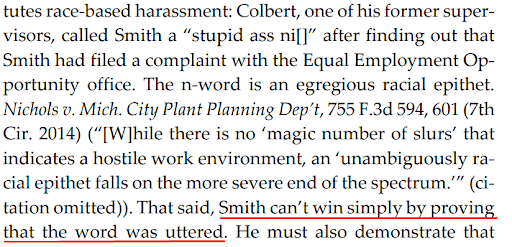1. The Conduct Was Unwelcome
The first element, that the conduct was “unwelcome,” is easily satisfied in almost every case. The employee just has to show that they did not want their colleague or boss to harass them.
However, in
sexual harassment cases, the employer may challenge this. They may argue that the sexual advance was not something that was rejected.
This advance might be described as flirting. It could be touching. Or it could actually be sexual behavior. An obvious defense for the employer to the “unwelcome” element is that the sexual advances were consensual amongst the employees.
Your employer could use your words against you. If you told someone that you were in a consensual relationship with this boss, you would have a weaker claim. If the conduct went on for years, and you never complained, your employer might argue that you welcomed the conduct.
2. The Conduct was “Based on” Your Protected Class
The second element is that the harassment must be based on the employee being part of a protected class. A
protected class is a group of people that share a common characteristic protected under employment laws.
This includes race, color, religion, sex (including pregnancy), national origin, age (40 or older), disability or genetic information. Almost everyone has a characteristic that places them in one of these protected classes.
For example, reverse discrimination is recognized under
Title VII. This means that a white male could also be a victim of harassment. Race is a protected class, as is gender.
A great defense for the employer to this element is that the harasser was just a jerk to everyone.
Employment law is made up of numerous statutes. Courts hear arguments from lawyers and then issue opinions interpreting the statutes. In most legal proceedings, courts agree with how the law should be interpreted.
Sometimes, the courts do not agree. Some courts have interpreted the discrimination and harassment statutes to mean that the employer is not liable if the harasser is a jerk to everyone.
For example, let’s say the harasser yells at both black and white employees throughout the workday. He uses curse words. He disciplines them both for minor infractions. He makes the work environment miserable for all black and white employees on an equal basis.
The employer would have a good argument that this harasser is just a mean boss. A common theme in employment law is that you generally cannot sue just because you have a mean boss.
3. Conduct is not Offensive to a Reasonable Person
Thirdly, the employer’s conduct must be offensive to a reasonable person.
Petty slights do not count.
For example, during a conversation about the company softball league, a coworker makes a comment to an African-American employee saying that he should get involved because he is probably good at sports.
The employee might be offended by the comment. He doesn’t play softball. He never has.
Although it was offensive to the employee, the comment alone probably would not rise to the level of offensive harassment under the law. A reasonable person probably would not consider a single, misguided assumption to interfere with his work environment, however misguided the comment might have been.
Further, since the comment occurred on a single occasion, it likely is not sufficiently “pervasive,” meaning common, to meet the standard under the law.
Now, if the comments were to continue and become even more offensive, you can see how
employment harassment lawyers could craft a legal argument for harassment.
4. Conduct must be Severe or Pervasive
This last element normally wins or loses harassment claims. You have to prove that the conduct was severe or pervasive.
When the conduct is severe, courts have found that a single act may be sufficient to constitute a hostile work environment claim. For example, courts have pretty much always found that any instance of criminal sexual assault is sufficient to maintain a legal claim for sexual harassment.
When you think of a single act that might create a hostile work environment, you might think of an employee calling another employee the “n-word.”
As a judge, Amy Coney Barret ruled that calling another employee the n-word is not in and of itself sufficient to create a hostile work environment:

This decision
received some press during Barret’s run for the senate, confirming her Supreme Court nomination.
Although we disagree with the outcome, this raises interesting points. In employment law, the context matters. Was the employee only called the n-word once and then never discriminated against again?
Even if he was, doesn’t the use of that word make the work environment so hostile that it forever changes his work environment?
Your employment attorney’s job is to work through questions just like these and help develop your case based on your individual circumstances.
Concerning the term “pervasive,” the question that often is raised is about how often the offensive conduct happened over a period in time.
Let’s say your boss touched you without consent. It happened once. Then, five years later, he starts flirting with you. There is now a five year gap between the touching and the flirting.
The unwelcome acts are not severe. They do not rise to the level of an egregious single act, meaning a single act that is severe enough to require prosecution.
And the conduct does not appear pervasive. In fact, an employer would likely argue that two incidents over a five-year period is not pervasive.
Courts will use a
totality of the circumstances test in determining whether the conduct is illegal harassment.
This means that you take all these factors together and try to figure out whether harassment occurred. If the conduct was more severe, then it could be less pervasive and still warrant action and vice versa.






